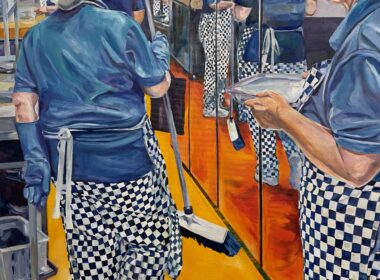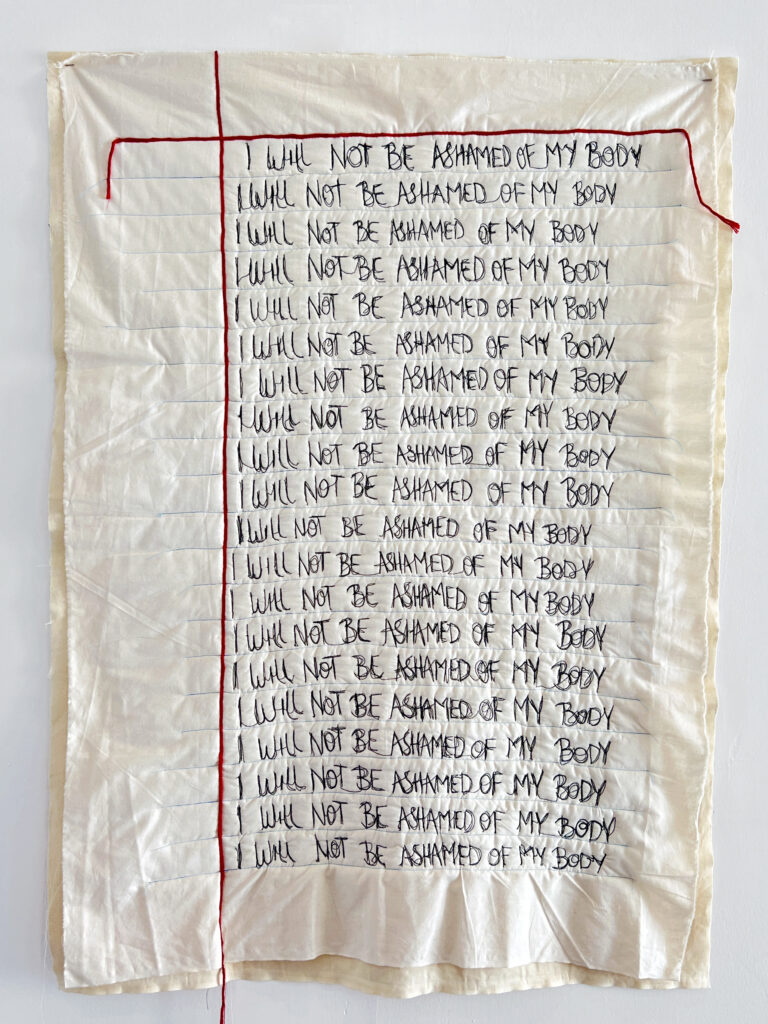
Jenny Lee Robinson’s 3-D Art of Korean Folklore and Mythical Creatures
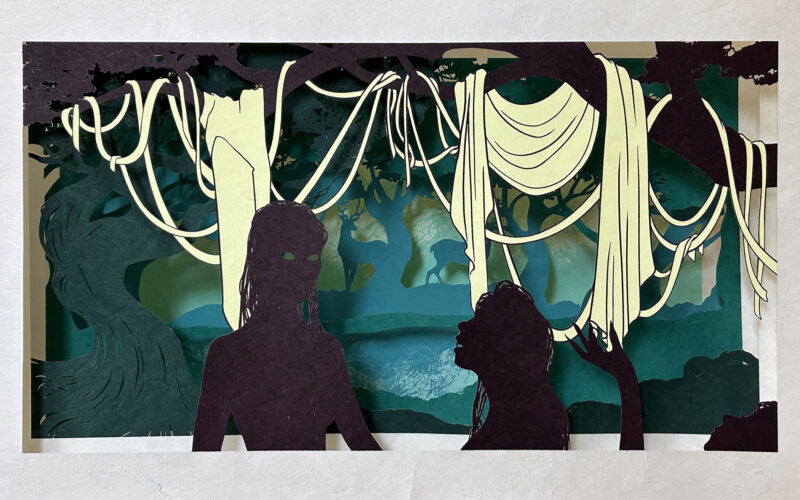

Jenny Lee Robinson is an American-born mixed-race artist of Korean descent living and working in her mother’s hometown of Seoul, South Korea. While she was raised in the predominantly white suburbs of Minnesota, her parents made a strong effort to maintain a connection to the Korean language and culture. She found ways to engage in Korean communities while attending the Maryland Institute College of Art, and following graduation in 2011, she moved to South Korea. Later in Korea, she completed her MFA in Painting at Ewha Woman’s University 2017 through the NIIED Korea Global Scholarship program in 2017. She continues to live in Korea and creates work related to storytelling, folklore, migration, womanhood, and identity. Her art mediums include paper installation, printmaking, collage, and book arts, oftentimes using Korean traditional mulberry paper, Hanji.

Jenny Lee Robinson artwork deals with girlhood in transition, the awkward, uncomfortable and yet magical changes that happen in adolescence as a young girl’s identity takes shape. These themes are expressed through images and figures from myth and folktales, which include mermaids, harpies, and witches. The universal familiarity and mystical nature of these characters fluently translate the beauty and horrors of female development. In this interview with Jenny where she shares her theme of work, how her Korean heritage has influenced her Art practice, the importance of mythological creatures in her work and more.
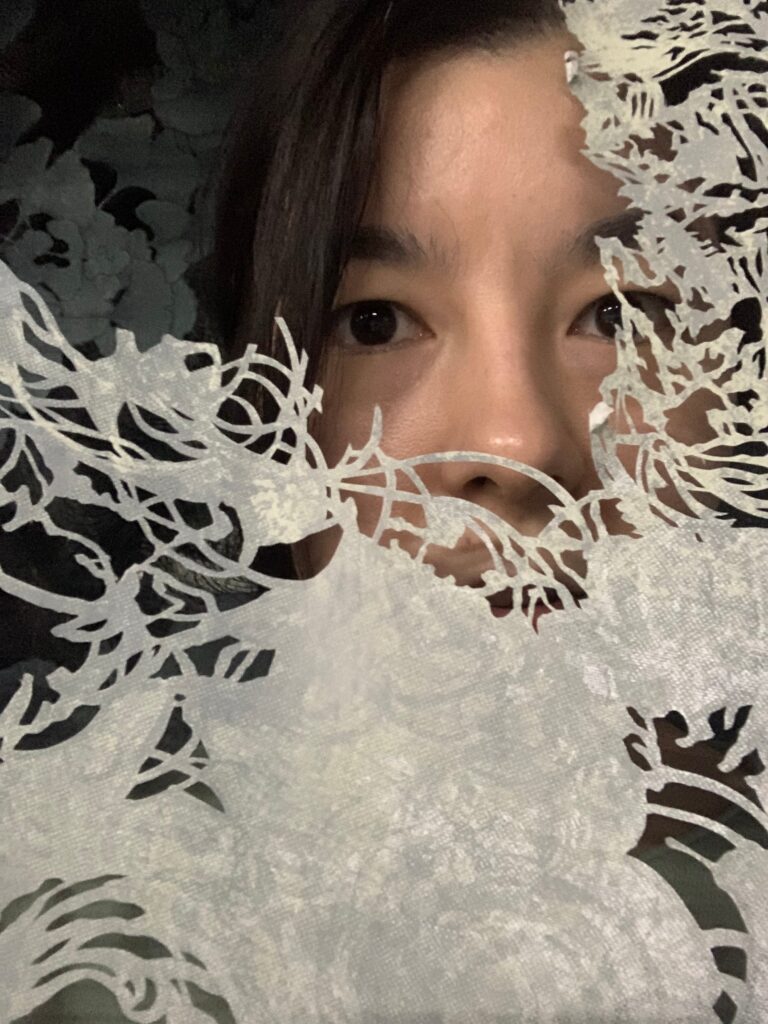
1. Jenny, could you elaborate more on your theme of work for our readers?
The prevalent themes of my work are myth and folklore. I have used myths as a jumping-off point in my art practice since I was a student. I had this wonderful professor for my drawing class, and we were assigned to do nearly an entire semester’s worth of work based on a myth of our choosing. This assignment influenced the art practice of many students going forward. The practice gave us a narrative focus yet it also was versatile and open to personal interpretation and adaptation. Also, working with well-known stories helps to give better context to viewers, so you are also working on a subject matter that is accessible and understandable to most people. I wasn’t interested in making work that was esoteric or opaque. I wanted to create work that connected with others and that could also feel universal and approachable. Mythology and folklore are both of those things.

2. How do you think Korean heritage has influenced your art practice?
The biggest way my Korean heritage has influenced my art practice is by relocating me to Korea. I had always wanted to build a life in South Korea, and after I finished my undergrad degree, I moved to Korea, and I have stayed here ever since. Before moving to Korea, I was interested in Korean folklore, and in Korean traditional handmade paper, Hanji, and incorporated folkloric imagery and tried to use as much Hanji as I had limited access to in the United States. Now that I live in Korea, Hanji is not only much more affordable, but I can purchase it in so many varieties of sizes and weights and, amazingly, I have so much more available here than I could’ve dreamed of back when I was living in the United States.
My artwork draws from folktales and myths about girls and women, incorporating tales and characters that include witches, mermaids, and winged figures and other archetypes that reappear in folklore and myths in different cultures.
Jenny Lee Robinson Bio
When it comes to my art practice, I found that I am no longer as preoccupied with my Korean identity when it comes to Korea. When I was living in the States, and in my student days, a lot of my work focused on my dual Korean and American identities. Since I had often been in environments where I had been either the only Korean or one of very few, making art about my Korean identity was a way of maintaining my sense of self and my cultural connections to Korea, but also a way to define myself on my terms before anyone else could try to do that for me. However, after around five years in Korea, I no longer needed to explain myself through my art. This was due to several factors, one was around the time I had published my thesis for my M.F.A. and my thesis work was primarily about that identity, and I found that through writing my thesis I had essentially so thoroughly examined the topic of my cultural identity through writing that I no longer felt the need to explore this more in my artwork.
The other factor was that after living in Korea for a long period, I felt my identity was better understood in the environment and communities I had become a part of, and that I no longer felt I needed to define myself for others. Also at a certain point, I think it’s understandable to get tired of making art about your identity, and that in a way you can get a little sick of yourself. Korean folklore and Korean artists still influence my work, and I cannot help being influenced by Korean art and aesthetics since I live in Korea. However, how that has influenced my art and practice has evolved and I find that I am enjoying that change.



3. Jenny, I love the work you did with your tunnel books. Can you share what message you wish to convey through them?
What I most enjoy about tunnel books is that they have a depth to them that makes the two-dimensional world flat but immersive. I love that I can create these fantastical worlds within the tunnel book and that the layered three-dimensionality of the structure gives this image and setting depth. One of my favorite things about my large-scale tunnel books is to see people physically interact with the work by stepping into it and being immersed between the large sheets of paper. I love seeing visitors peek through the gaps of paper and take photos of the artwork. Going forward, I would like these tunnel books to appear as portals, in between spaces that can take you to another plane. Similar to Allice’s rabbit hole, or a door to another world in the back of a wardrobe. I have been increasingly reading more portal fiction and fantasy and that type of fantastical door is something I want to explore more in my next tunnel books.
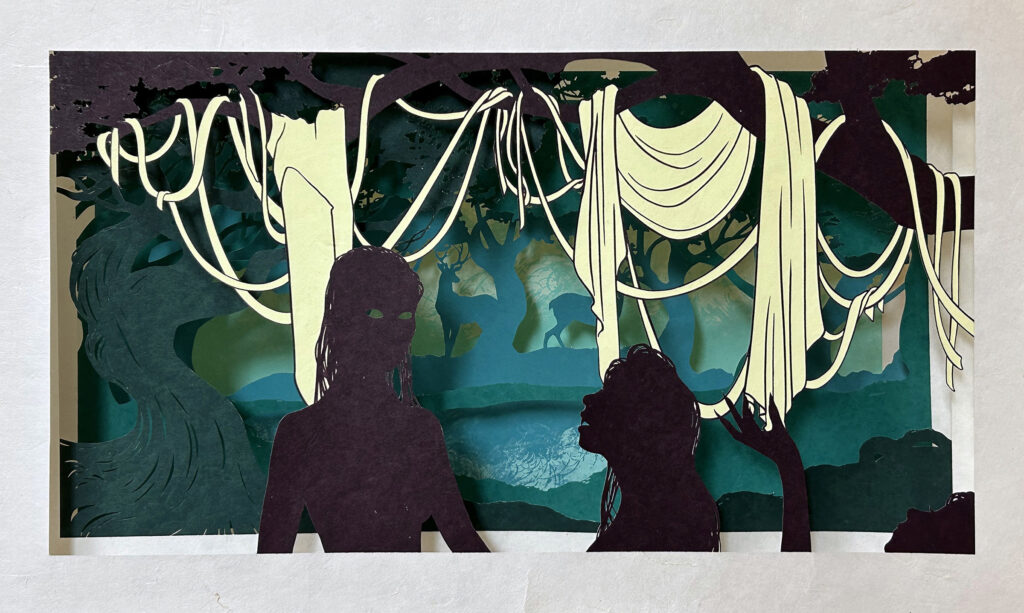
Through these characters, these folktales and myths are cathartically reinterpreted to share stories of women’s experiences of strength, growth, trauma, and resilience.
Jenny Lee Robinson Bio
4. Can you talk about the mythical iconography that is present in your work?
During most of my twenties, the Korean folktale that appeared most in my work was the 선녀와 나무꾼. The various English translations of this folktale are The Deer and the Woodcutter or The Woodcutter and the Heavenly Maiden. This story is about a bachelor woodcutter, who kidnaps a magical wife through trickery and advice from a roe deer he assisted in escaping a hunter. In my student years, I focused on the marriage and the family of these characters, relating their marriage and family to my own biracial family home. However, over the years re-examining the details of this tale, and comparing it to similar bride theft or animal wife stories that appear in storytelling all over the world, my portrayal of this story evolved. Instead of focusing on the family, I focused on the kidnapped bride, the 선녀. I tend to refer to her as the Heavenly Maiden in English. I have depicted her in battle, as an archer like Diana the Huntress, I have simply shown her flying freely with her sisters. I then became interested in how to depict girlhood and women in my artwork through folklore. At the time, many of my friends were starting to have kids of their own, and I started to consider what kind of art and what kind of storytelling would I want to pass on to these kids. What kind of stories would I have wanted or needed that I lacked when I was a girl? That was a jumping-off point for a body of artwork that became part of my first solo exhibition in Seoul, called Stories for My Girls. Since then my use of folklore and mythical iconography continues to evolve, but many figures do remain present. I have always loved mermaids because their biology implies that they are made to adapt to two different environments, and I like to relate that to how I adapt between different countries, cultures, and languages. I also loved the idea of creating monstrous women, or frightening and powerful women. Images of frightening and powerful figures are interesting and exciting. I have also lately been interested in fantastical folkloric settings. Much mythology and folklore take place in forests, the ocean, and the sky. I first delved into this subject matter with my tunnel book, Sky/Forest/Sea, and I plan on continuing to explore it through tunnel books in the present and future.



5. I was browsing through your Instagram and noticed you are working with ‘vegetable papyrus’. I am intrigued and would love to hear more about this.
I have always been interested in papermaking, and when the opportunity to make vegetable papyrus presented itself I took the opportunity! This was during the pandemic, and The Minnesota Center for Book Arts hosted Zoom workshops, and this particular one was taught by artist Yuka Petz. I loved the workshop and spent a few months experimenting with different fruits and vegetables, Yuka continued to offer me tips and advice after the workshop which was wonderful! So far I have mostly been experimenting with the technique, and I have yet to use these papers in my artwork, but they are all saved and cataloged in my papermaking binder that I started in my student days and I plan on someday finding a way to use these handmade papers in my practice. So far the most common question I get about these papers is if they are edible, and yes they are but I don’t think it has much flavor.

6. Jenny, before wrapping up, what is the best advice you have received as an artist that you would like to share with our readers?
Imagine the execution of your artwork in your head, and what your hands can create in reality. But if you continue to practice your craft, your hands will catch up. This is helpful to remember when I feel disappointed with my progress or results. The other is a John Cage quote, “Don’t try to create and analyze at the same time. They are different processes.” I read this bit of advice at a time when I needed to hear it, and I have reminded myself and others of it ever since. Sometimes when feeling stuck, or anxious about what to do next, it is most likely because you are critiquing while you are trying to make art. It helps to just freely have periods where you create and make art, and then periodically step back and look at what you made from a distance and analyze it. It is so much more fluid and freeing to make art this way, than to agonize over every brush stroke.
Ultimately my goal is for the viewer to feel a sense of intimacy with my work, regardless of who you are and what your own experiences are in life.
Jenny Lee Robinson Bio
Social Media Details of Jenny Robinson








